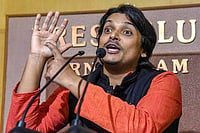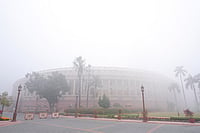Nishant, incidentally, was developed specifically for the army by the DRDO. Although tested extensively and successfully in the gruelling desert of Pokhran, Rajasthan, in May 2002, the Indian army is yet to place orders for its manufacture. Says a senior government source, "The adequacy of Nishant to perform surveillance in the plains, deserts and coastal areas has been proved fully through strenuous trials. Why has the army not ordered them for these purposes?" Adds another official bitterly, "There's no motivation for fast-track procurement for Indian systems. But it's just the reverse for foreign (read Israeli) systems."
Way back in 1989-1990, the army and the DRDO had engaged in intense discussions to arrive at user requirements for developing a surveillance vehicle. It took two years to arrive at a comprehensive list of core features the army wanted the proposed UAV to have. Formal sanction for developing it came in 1991.
The one key requirement insisted upon was that the UAV should be transportable, requiring no fixed assets like runways for its operation. The advantage was obvious: the army could take the UAV as close to the borders of, say, Pakistan, instead of wasting airtime by flying it out from an airfield located in the hinterland. This could enable the UAV to spend maximum time over the targeted surveillance area. The army had even fixed the altitude ceiling—or the height at which the UAV should fly—at 12,000 feet.
The design of Nishant was consequently geared for vertical launches from a truck with a pneumatic catapult. Currently, Nishant is capable of staying airborne over target zones for 4-5 hours, providing detailed images of the area under surveillance. Thus, it can enable accurate fire from long-range artillery guns like Bofors or short-range missiles like Prithvi. At the end of the mission, the vehicle could also be recovered through a parachute. In other words, it is a reusable vehicle. "We have mastered this technology," said a source.
Since Nishant was still under development, the Narasimha Rao government in the '90s decided to order the first batch of Searchers. "It was decided that 10 would be imported but the bulk would be made in India," say sources. But this was forgotten post-Kargil. The armed forces peremptorily decided that only a vehicle capable of flying a higher altitude (that is, over the mountains) was what the country needed and placed bulk orders with Israel with great alacrity.
Of course, this conveniently forgets the specification it had insisted for Nishant. Says a source, "The key point of Searchers, both Mark I and Mark II, is that they are both pucca runway systems." Not only this, fresh orders for Searchers even with a height-ceiling of 10,000 ft have also been made.
And it isn't as if Nishant, available at two-thirds the cost of a comaparable system, can't be reconfigured to meet the latest altitude specification of the army, say sources. Certain models of Lakshya, another UAV developed by the DRDO, have test-flown at over 40,000 feet, higher than any of the Israeli UAVs. Lakshya, though, can remain airborne for only 45 minutes, but is adaptable for high-speed surveillance. Ironically, in October 2002, in the deserts of southern Israel, successful evaluation tests, at Tel Aviv's expense, were carried out on Lakshya as a target drone—a live-fire target for missiles and guns.So impressed were Israeli officials that they entered into serious negotiations for long-term acquisition of these UAVs—and could become the first foreign customer for this sophisticated system.
The decision to import UAVs has hence sparked a lively debate in defence circles: should India put all its eggs in the Israeli basket? The question assumes importance because of the crisis Indian defence sectors encountered in the wake of the collapse of the Soviet Union. Then India had found it tricky and cumbersome to source defence parts. Wouldn't dependence on imports also stunt indigenous capabilities? "This kind of indiscriminate imports do not generate any skills, wealth or even employment," says a source. "While import of major systems such as the Green Pine radar for anti-missile defence or the AWACS is unavoidable, the wisdom of massive imports of UAVs in the face of proven indigenous capability is questionable."

























